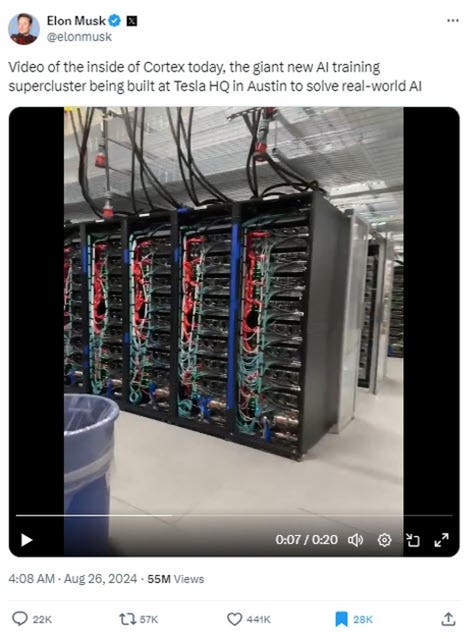Elon Musk’s New Project Raises Environmental Concerns
Elon Musk, after deciding to reduce his active involvement with DOGE and causing certain disturbance in operations of national scales – ranging from humanitarian aid to scientific research, to the disruption of government communications – seems to have redirected his focus elsewhere. He stirred up curiosity when his team acquired a derelict factory that was once owned by the renowned vacuum maker, Electrolux, located in the outskirts of Boxtown neighborhood.
Musk rebranded the deserted manufacturing plant ‘Colossus’ and began revamping it into a technological juggernaut by loading it up with Nvidia Graphics Processing Units (GPUs), the key components of Artificial Intelligence (A.I.) operations. He has currently gathered a staggering number of 200,000 GPUs, but apparently, he isn’t stopping until he hits a million.
These ambitions are no child’s play. Some analysts speculate that Musk is on the verge of constructing the most monumental supercomputer globally. As one can imagine, it isn’t just the scale of the equipment that is humongous, but the energy required to power such a system corresponds to its vastness.
To comply with the absurdly high energy demand, Musk’s xAI team brought in roughly 35 movable methane-gas-power generators to assist the data center’s power needs. These robust generator trucks emit a mixture of pollutants, notably nitrogen oxides, and formaldehyde, which is an environmental concern, especially as they are reportedly operating without necessary permits.
SouthWings, an organization comprising volunteer pilots who assist in scrutinizing environmental issues, detected vigorous heat emission from a minimum of 33 generators using thermal-imaging technology. This signifies they were functioning simultaneously. Collectively, these generators have an output capacity of approximately 420 megawatts.
This colossal project right in the heart of Memphis, a city of rich history and home to Elvis and Martin Luther King Jr., has led to environmental concerns. A major point of contention is its situated area such as Boxtown and Westwood that are mainly African-American populated zones.
These areas coincide with numerous industrial facilities, including an oil refinery and several chemical plants. Elevated pollution levels that can potentially harm people’s health are already a concern, with the region leading the state in emergency hospital visits related to asthma.
Despite the looming environmental issues, representatives from xAI have ensured that their operations won’t violate emission control standards. They’re making extensive efforts to equip their turbines with technology and systems to reduce nitrogen oxides emissions to a minimum of 2 parts per million (ppm).
Yet, a study from the preceding year, conducted by researchers from various tech and energy firms, recommended an alternative way of powering large data centers. The report suggested the potential of solar microgrids, citing their quick installation and cost-effectiveness to power such extensive operations.
Many companies that depend on rental power are already considering switching to renewable energy sources, primarily due to the exorbitant costs of temporary power infrastructures and their decreased reliability compared to more permanent solutions.
Solar panels, coupled with battery storage, could be a cleaner replacement for methane gas turbines, remarkably reducing the need for such high-polluting equipment. This solution could significantly mitigate the environmental impact associated with running a large-scale data center.
Solar panels have the additional benefit of not releasing harmful pollutants such as nitrogen oxides and formaldehyde, which are usually associated with combustion-based power sources. This could go a long way in improving the air quality within the surrounding communities.
Despite these potential alternatives, it remains to be seen what path Musk and his xAI team decide to follow. It’s important to balance the expansion of AI technology infrastructure with the well-being of local communities and environmental sustainability.


